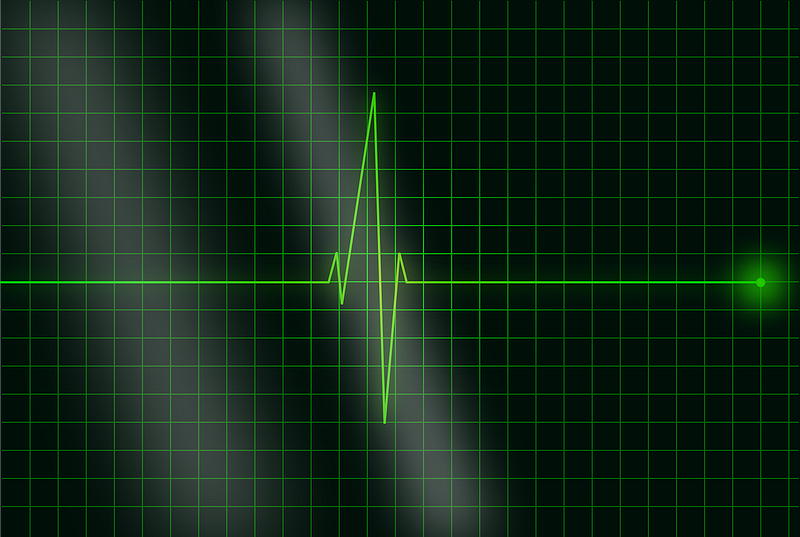Learn the basics of heart rate, why it’s crucial for your health, how it’s measured, and what the latest technologies like Vista by Medista can offer in heart rate monitoring.

Introduction
Your heart is constantly working — beating around 100,000 times each day to keep you alive. But how often do you actually think about your heart rate? This number, which tells you how many times your heart beats per minute, holds valuable clues about your cardiovascular health, fitness levels, and even your stress levels. In this blog, we’ll take a deeper dive into what heart rate is, why it matters, and how advancements in technology are making it easier than ever to monitor it in real time.
What Is Heart Rate?
Heart rate is simply the number of times your heart beats per minute (BPM). It’s a quick and easy way to measure how hard your heart is working. For most adults, a normal resting heart rate falls between 60 and 100 BPM. Athletes, however, can have a lower resting heart rate, sometimes as low as 40 BPM, which signals a strong, efficiently working heart.
When your heart rate is measured, it’s giving you a snapshot of how your body is handling everything from exercise to stress to illness. Fluctuations in your heart rate are normal, but consistent readings outside of the normal range can provide clues about potential health issues.
Why Is Heart Rate Important?
Your heart rate isn’t just a random number — it’s a key indicator of your body’s overall health and how well your cardiovascular system is functioning. Here’s why heart rate monitoring matters:
- Heart Health: A heart rate that’s consistently too high or too low can signal problems like arrhythmias, heart disease, or thyroid issues.
- Fitness Levels: Monitoring your heart rate during physical activity can help you measure your fitness and adjust your workouts accordingly.
- Stress Response: Your heart rate responds to emotional stress. Elevated heart rates during stressful moments can show how your body is coping, while heart rate variability (HRV) provides insights into your ability to recover.
Factors That Influence Heart Rate
Heart rate isn’t a fixed number. It can be affected by a range of factors throughout the day:
- Physical Activity: During exercise, your heart works harder to pump oxygen-rich blood to your muscles, causing your heart rate to rise.
- Stress and Emotions: Anxiety, fear, and excitement can all cause your heart to beat faster.
- Temperature: Hot weather can elevate your heart rate as your body tries to cool down.
- Medications: Stimulants like caffeine or medications such as beta blockers can significantly impact your heart rate.
- Health Conditions: Conditions like fever, anemia, and hyperthyroidism can cause an elevated heart rate, while hypothyroidism can lead to a slower one.

How to Measure Your Heart Rate
Checking your heart rate is easy, and you don’t need any fancy equipment to do it. Here are some of the most common ways:
- Manual Measurement: Simply place your index and middle fingers on your wrist or neck, count the beats for 15 seconds, then multiply by four. That’s your BPM.
- Wearables: Smartwatches and fitness trackers give you continuous heart rate monitoring and often come with apps that allow you to track trends over time.
- ECG (Electrocardiogram): Used in clinical settings, ECGs provide the most accurate heart rate measurements and can detect abnormal rhythms.
Understanding Heart Rate Zones
Your heart rate doesn’t stay the same throughout the day — it varies depending on your activity level. Understanding these heart rate zones can help you tailor your workouts or check your health status.
- Resting Heart Rate (60–100 BPM): This is your heart rate when you’re completely at rest. A lower resting heart rate generally indicates better cardiovascular fitness.
- Moderate Activity (50–70% of max HR): This zone is ideal for low-intensity exercise like walking, where your heart is working at a moderate level.
- Cardio Zone (70–85% of max HR): When you’re doing more vigorous activities, such as running or cycling, you’re in the cardio zone. This strengthens your heart and lungs.
- Anaerobic Zone (85–95% of max HR): This high-intensity zone is where you push your body to its limits. It’s often used for short bursts of intense exercise.
- Maximum Effort (95–100% of max HR): This zone is usually reached during extreme exertion and should only be sustained for brief periods.
Abnormal Heart Rates: What You Should Know
While it’s normal for your heart rate to change based on activity or stress, consistently abnormal readings can signal a problem. Here are two common heart rate abnormalities:
- Tachycardia: If your heart rate is over 100 BPM at rest, it could be due to stress, dehydration, or even heart disease. Prolonged tachycardia is something you should discuss with a healthcare provider.
- Bradycardia: A resting heart rate below 60 BPM isn’t always a problem — many athletes naturally have slower heart rates. But in non-athletic individuals, it could indicate an issue with the heart’s electrical system.
How Often Should You Check Your Heart Rate?
For most people, checking your heart rate a few times a week is enough, especially during exercise. However, if you have a heart condition or other health issues, you might need to monitor it more regularly. Your healthcare provider can guide you on the right frequency based on your health status.
Cutting-Edge Technology for Heart Rate Monitoring: Vista by Medista
The world of heart rate monitoring has evolved beyond manual counting and basic fitness trackers. With Vista by Medista, you can now measure your heart rate and much more with just a quick face scan.
Vista uses remote photoplethysmography (rPPG) technology to calculate your heart rate by analyzing the subtle changes in light reflected off your skin. This allows it to capture blood volume changes, which are then processed by sophisticated algorithms to give you an accurate reading — no wearables required.
Beyond Heart Rate: Total Wellness Tracking
In addition to heart rate, Vista monitors other key health metrics like your stress level, wellness score, and overall cardiovascular health. This all-in-one tool provides a comprehensive overview of your health, empowering you to take proactive steps toward your wellness goals.
Ready to give it a try? Visit vista.medista.ai or download the app and start tracking your health in real-time.
Conclusion
Heart rate is one of the most straightforward yet revealing indicators of your cardiovascular and overall health. By monitoring it regularly and understanding what it means, you can make informed decisions about your fitness and wellness. Whether you’re an athlete looking to optimize your training or just someone who wants to stay on top of their health, keeping an eye on your heart rate is essential. And with the latest innovations like Vista by Medista, tracking your heart rate has never been easier or more insightful.

